BAYOU (Day 3 - part 3)
Making our way down the bayou...



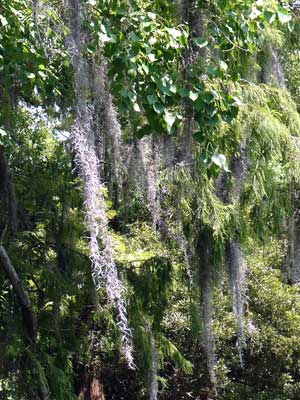
Spanish moss
Spanish moss does not come from Spain. It is native to Central and South America, the Caribbean and the southern U.S. It is also not a moss but rather a bromeliad (which includes plants like pineapples and succulents). A bromeliad is not a parasite but an epiphyte. It does not send roots into the tree it clings to, nor does it take nutrients from it. Instead it collects water and nutrients through it own leaves from sunlight, rain, fog and airborne particles. It is commonly found on the southern live oak and bald cypress.
Native tribes told the French explores that it was named "tree hair." Since it reminded the French of the long beards of the Spanish conquistadors, they called it Spanish Beard. The Spanish tried getting their revenge by calling it French Hair, but the name never became as popular.
Animals don't eat it because has almost no nutritive value, but they often build homes and nests from it. People have used it mixed with mud to make mortar for their houses, as insulation, tinder for fires, and made it into blankets, rope and mattress stuffing.
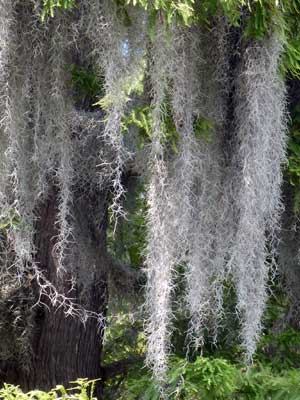

We suddenly saw our first alligator! It swam quickly towards us. Generally they rest about 11 - 12 feet down where it's cooler but they come up as soon as they hear the boat. Why? For marshmallows! Apparently alligators have no pancreas so sugar doesn't effect them. It looks like an egg (which alligators love to eat) but has zero calories (so they can't become dependent on the boats for food and still have to hunt to satisfy their hunger).



(left) Closing in on a marshmallow
The word alligator comes from early Spanish explorers who called them "el legarto" or "big lizard." The American alligator is a cold-blooded reptile, which means that its body temperature is regulated by the temperature of the surrounding environment. This is why they are often seen basking in the sun to warm up.



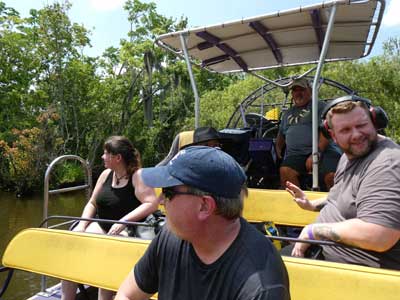



A southern painted turtle


This area is part of Bayou Segnette State Park, which rents out these cabins.


Another alligator!
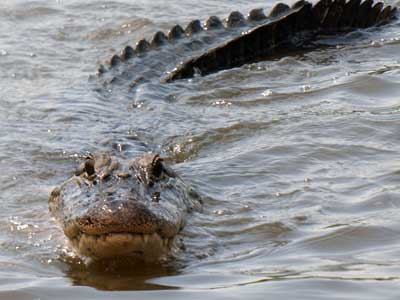

The American Alligator is distinguished from the American crocodile by its broader snout, darker color and overlapping jaws (when the jaws are closed, the edges of the upper jaws cover the lower teeth and the fourth tooth is no longer visible since it becomes enclosed in a pocket in the upper jaw). They are less tolerant of saltwater but can handle cooler climates than the crocodile.

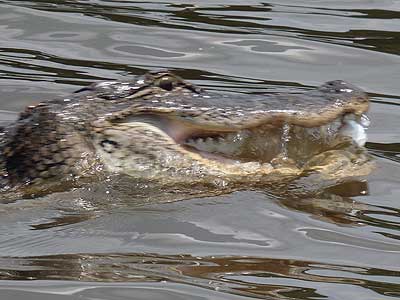
American alligators have 74–80 teeth. Juveniles have small, needle-like teeth that become much more robust. This changes correspond to its shift in diet, from smaller fish and insects to larger turtles, birds and other large vertebrates.


Alligators are about 8 to 9 inches in length when they hatch from eggs. Their growth rates depend on their habitat, sex and age. Male alligators grow faster and larger than females.

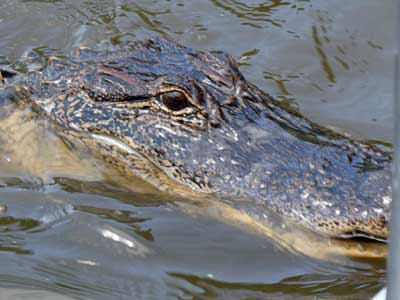


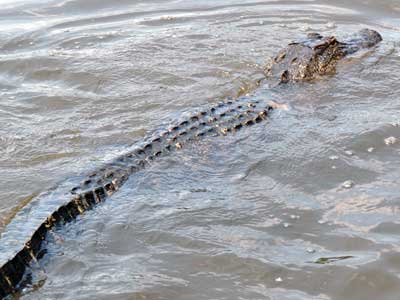

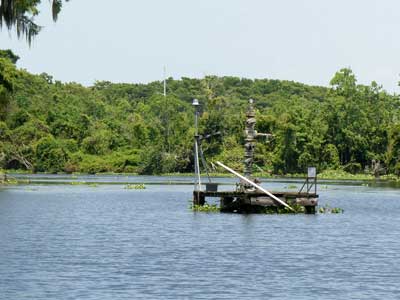

Pumping for oil in the bayou ended in the late 80s, however, this pump hasn't been pulled it out yet. Unfortunately, people will come and steal the batteries which are used for lights... thereby making it too dark to see and then a boat hits it.
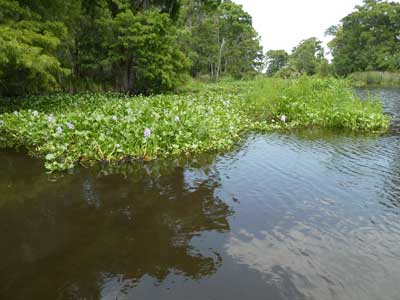
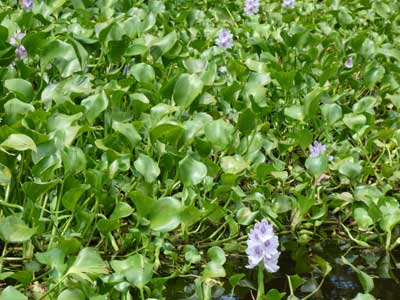
Water hyacinth is a floating plant from South America that was introduced into Florida in the 1890s and into Louisiana around 1903. It is highly invasive and very quickly forms a dense floating carpet on the water surface that blocks sunlight, killing submerged plants and leading in low oxygen levels in the water. It also clogs the waterways and costs millions of dollars per year to keep them open for navigation.

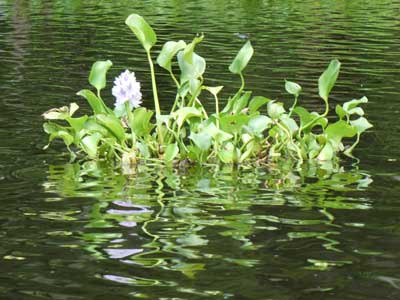
They form little islands that can drift and spread.


Very pretty though


Each plant has dense, branching roots that extends for 2-3 feet beneath each plant.


Bald cypress trees ... and their knees
The trees are protected with a $10,000 fine and jail time. Living in the water, they extend their roots upwards (called knees) for air and sun. If they get cut down, the tree dies. The trees area also very sensitive to salt water.




return • continue

